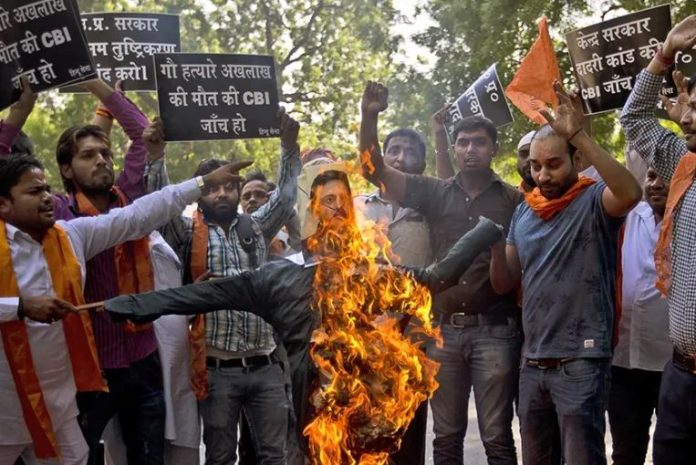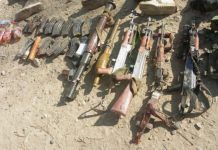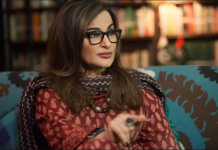DM Monitoring
NEW DELHI: Speaking at an exclusive event at the Observer Research Foundation (ORF) on February 5, Union home minister Amit Shah claimed that the ruling government had ended “border, ethnic and religious disputes” in the Northeast. The timing of his claim is jarring.
Less than a fortnight earlier, the capital of Manipur, which has been embroiled in an intense ethnic conflict between the Meitei and Kuki-Zomi communities since May, witnessed what can only be called a hostile takeover of the state machinery by a militia. On January 24, Arambai Tenggol, a Meitei ethnic militia, accused of attacks against Manipur’s Kuki-Zomi population, summoned 39 Meitei lawmakers in Imphal and administered an “oath” to, among others, protect “Manipur’s territorial integrity”. They were made to sign a six-point charter of demands, which was then sent to the Union government with an implementation deadline of 15 days.
The “ceremony” was held at the iconic Kangla Fort, the traditional seat of the erstwhile Meitei king-dom. According to media reports, the Arambai cadres not only forced the state police to keep out, but also roughed up some of the lawmakers present. Among those reportedly beaten up were two Mem-bers of Legislative Assembly (MLAs) from the Bharatiya Janata Party (BJP), which rules the state. One of them was Paonam Brojen Singh, a Meitei Christian, who is seen to be a political opponent of the chief minister and whose Imphal property was vandalised by an Arambai-led mob in early May. Mani-pur’s Congress chief, K. Meghachandra, was also reportedly assaulted.
In short, the whole ceremony, conducted under duress, was nothing short of an insurrection – a direct challenge to the state’s constitutional authority to enforce law and order.
Few in the national commentariat have understood the real gravity or political and constitutional rami-fications of what happened in Imphal on January 24.
A multi-layered security ‘bandobast’, with personnel drawn from the nearly 60,000 central and state security forces operating under the Unified Command in Manipur, including the Assam Rifles and the Central Reserve Police Force (CRPF), were to be stationed outside all the entrances to the fort to stop the Arambai cadres from entering. However, according to a report in The Print, the security cover was withdrawn at the last moment. No one knows who gave the orders.
Photos captured by Scroll’s Arunabh Saikia show Arambai cadres in camouflage manning the fort’s main gate, along with open-top Gypsy cars, adorned with the Salai Taret flag, which once represented the seven Meitei clans of the Meitei kingdom, parked outside the complex. Looking at the pictures, an uninitiated observer might think the Arambai was an official paramilitary force. They would probably not know that its members have been accused of murder, rape, extortion and collection of ‘protection money’, and forcing Meitei Christians to denounce their religion at gun point.
The event didn’t end at Kangla Fort. It spilled out onto the streets of Imphal. Videos circulating on so-cial media show the Arambai’s influential “Commander-in-Chief”, Korunungba Khuman, dressed in pastel green camouflage, getting off a vehicle with a “Police” sticker pasted on its windshield and proudly marching to the famous “Ima Keithel” or “Mother’s Market” along with his lieutenants, as a rapturous crowd raising the Salai Taret flag cheered them on.
The stage-managed histrionics of it all shouldn’t be underestimated. The “oath” ceremony and Arambai’s triumphant parade afterwards marked the emergence of a new social contract in Manipur – one that allows an extrajudicial entity to claim the state’s constitutional legitimacy and monopoly over violence. Even “Hobbessian anarchy” doesn’t fully describe this dissolution of state power in Manipur.
Notably, the Arambai administered the oath in the name of Sanamahi, a Meitei deity, lending the whole event a ethno-religious flavour. The demands included the removal of “Kuki illegal immigrants” from the Scheduled Tribe (ST) list and conducting an Assam-like exercise to create a National Register of Citizens (NRC) for Manipur with 1951 as the base year. Both flow from the mischaracterisation by the Metei political elite and civil society of the Hills-based tribal community as “illegal immigrants” and “interlopers” from Myanmar.
If summoning elected constitutional functionaries and forcing them to abandon their sworn oath of office to uphold the Indian constitution, while coercing them to take an ethno-political pledge, isn’t an affront to India’s national security and political integrity, then what is?
Perhaps, what is even more striking is that the Government of India is directly and morally implicated in this extra-constitutional event as a Union minister – Rajkumar Ranjan Singh, the Minister of State for External Affairs – was also amongst the functionaries who took the oath.
Even by the logic of India’s anti-terror law, Arambai’s actions from May 3 onwards (and, specifically the January 24 event) amount to “terrorist act(s)” and a threat to national security. Their actions fall squarely within the four corners of what is punishable under the Unlawful Activities Prevention Act (UAPA), 1967. They were undertaken, among others, with the “intent to strike terror in the people” and to “…compel the State Government or the Government of India” to fulfil their demands.
However, Arambai is yet to face the music from the state. Let alone legal action, the Manipur police has not detained a single member of the armed group for the “oath-taking” ceremony and the alleged violence against elected lawmakers. Neither has the state government, led by the BJP chief minister, N. Biren Singh, condemned it.
Over the last few months, Imphal and New Delhi have watched from the wings as Arambai, which had relatively lesser influence in Manipur before May, steadily grew in scope and size while chipping away at the state’s authority by looting arms from police armouries, attacking central forces, and brandishing weapons in public spaces.
The rise of militias is a complex phenomenon, especially in the context of an active multi-ethnic con-flict. So, there may be many reasons why the Arambai managed to break through the glass wall of public opinion and become somewhat of a “Robinhood militia”.
But, a clear factor behind its ascendance is the creation of a critical political vacuum in Meitei society since the conflict began in May. It is likely that large sections of the population no longer trust the Singh government to protect their interests. Arambai emerged as a more viable and compelling alter-native, not least because of its resolute military action at the frontlines. Despite growing evidence of their role in perpetuating violence against the Kuki-Zomis, an editor of the People’s Chronicle, an Im-phal-based publication, had called the militia’s role and influence in Manipur since May as being akin to a “WhatsApp group”.
The Meitei public now sees the Arambai as a unifying political force, rather than just their rightful mili-tary representative. For them, the “oath-taking” ceremony was the group’s attempt to discipline Meitei lawmakers across the political spectrum and compel them to uphold core concerns of the community.
In fact, the Kangla Fort event, with all its spectacular symbolism and political iconography, has thick-ened the air of myth and enigma around Arambai Tenggol, a name that evocatively refers to the dart-wielding calvary force of the ancient Meitei kingdom of Kangleipak.
Interestingly, the Arambai seems to have become even more popular than the established (and pro-scribed) Meitei armed groups, such as the United National Liberation Front (UNLF), People’s Liberation Army (PLA), and Kanglei Yawol Kanna Lup (KYKL). It seems to have been more successful than these older insurgent groups in drawing the disenchanted and disgruntled Meitei youth into a programme of patriotism and direct action. In fact, even in terms of actual armed action on the ground, the Arambai appear to have overshadowed the presence of the older groups, resulting in a potential turf war be-tween them.
What’s more worrying perhaps is that the Arambai’s soaring influence among the Meiteis, including their public figures, will further discourage the Biren Singh government from acting against it. By mov-ing against the group, Biren Singh could alienate his core constituencies and thus, make himself less politically valuable to the BJP’s high command. This creates a fatal deadlock, which allows the Arambai to not just persist, but also grow even bigger and stronger.
In the recent past, prominent Meitei personalities, such as Bollywood actress Lin Laishram, and Licypri-ya Kangujam, a 12-year-old climate activist, have publicly expressed their support for the Arambai on social media. Licypriya had even mobilised funds for the purchase of thermal imaging drones for the militia to use in their fight against what she called “illegal Kuki Narco Terrorist”. Using social service acts, such as distributing aid in Meitei relief camps, the Arambai has been able to command wide appeal in Meitei society.
Various reports in mainstream and social media have indicated that the Arambai enjoys high-profile patronage from the Meitei ruling elite. Even before the conflict began in May, it had the attention of senior political figures. Pictures from August 2022 show the militia’s leader, Khuman, sitting with the chief minister and Leishemba Sanajaoba, the titular king of Manipur and Rajya Sabha MP. A Facebook video from September that year shows cadres taking some kind of oath at Sanajaoba’s residence.
Members of the Kuki-Zomi community have also accused the state police of providing cover to Arambai cadres during violent attacks against their villages. Kuki-Zomi organisations have accused the police of handing over arms to Arambai members, many of whom have openly flaunted them in pub-lic. This marks a sinister blurring of lines between state and non-state armed actors.
But, why has this happened? One reason could be that the Manipur government was keen on dele-gating the mandate of law enforcement to other actors. But, there may be other factors in an ethnical-ly loaded context. Writing for the Journal of Conflict Resolution, Sabine C. Carey, Michael P. Colaresi and Neil J. Mitchell argue that “governments perceive ties to militias as a mechanism to evade ac-countability and muddy the flow of information about who is responsible for violence.”
One is reminded of the Arab Janjaweed militia in Sudan, which, supported by the government, wreaked havoc in the Darfur region two decades ago. It showed the world the catastrophic conse-quences of a government giving carte blanche (and access to small arms) to an ethnic militia. The ex-ample of Libya after 2011 also comes to mind. The vacuum that the killing of Muammar al-Qaddafi by NATO-linked forces left was quickly filled up by various militias, which then went on to claim state au-thority.
But, one doesn’t have to go that far. Right next to Manipur, the Myanmar military has been using a violent militia known as Pyu Saw Htee (PSH) to fight its dirty war against pro-democracy groups.
One of the demands that Arambai had made in its “resolution” during the Kangla event was fencing the India-Myanmar border. It had given New Delhi 15 days to fulfil the demand. On February 3, Singh travelled to New Delhi to meet Shah and revealed that the government was “set to take some im-portant decisions in the interests of the people of Manipur.”
Three days later, and 12 days after Arambai made its demands, Shah announced that the Modi gov-ernment would fence the entire border. Two days later, he announced that the home ministry has suspended the Free Movement Regime (FMR) that allows visa-free travel along the 16-kilometre band on both sides of the border.
One wonders if these big-ticket decisions are directly linked to Arambai’s demands (and deadline). If so, it is a deeply worrying sign of New Delhi giving in to an anarchic power in Manipur. It is also a sign of Arambai’s political sway in not just Imphal, but far beyond it, in the national capital.
In fact, two days before the Kangla event, an official central delegation composed of the interlocutor for the Kuki-Zomi insurgent groups, [organised under the United People’s Front (UPF) and the Kuki National Organization (KNO)], A.K. Mishra, and two senior officials from the Intelligence Bureau (IB) were rushed to Imphal to hold a series of meetings with the Arambai. It is likely that they wanted to reach a compromise to prevent a coup d’etat in Manipur. Clearly, New Delhi, too, can’t dismiss, let alone challenge, the militia’s influence in Imphal. In turn, Arambai is able to cement its credibility.
Merely two days after the Kangla Fort event, the state government hosted Republic Day at the same location. In his speech, Singh paid homage to the members of the Constituent Assembly and urged the people to “respect the Constitution of India and one another […].” The absurd irony isn’t lost on any-one, one hopes.
Whether Arambai Tenggol and the political forces behind its meteoric rise are ultimately prosecuted or not is a different matter. The fact remains that on January 24, the death knell of the Indian Constitu-tion rang loud with a deafening shrillness from Imphal’s Kangla Fort. The Modi government now has three choices – to shut the din, to shut its own ears, or to jive along with it. It is entirely up to the prime minister and home minister to take their pick.




